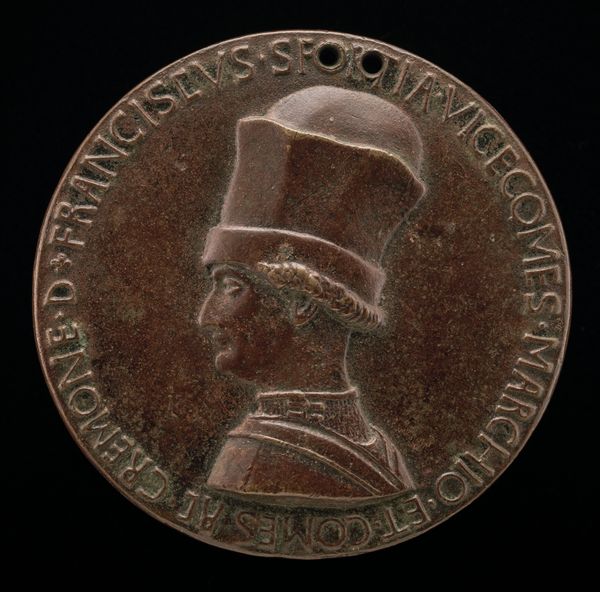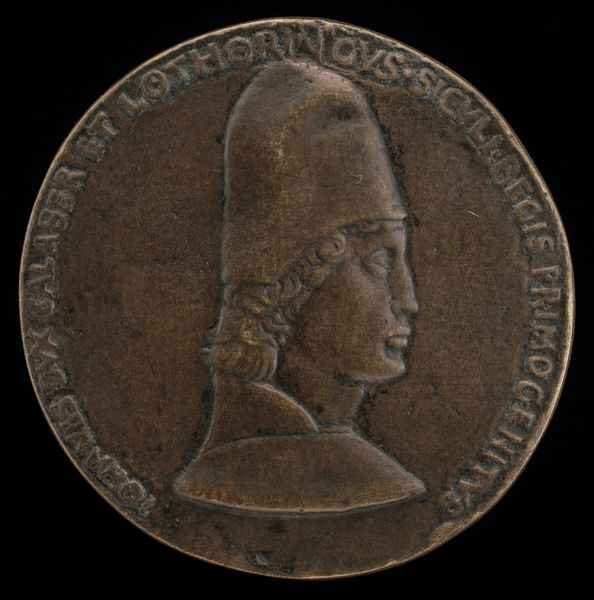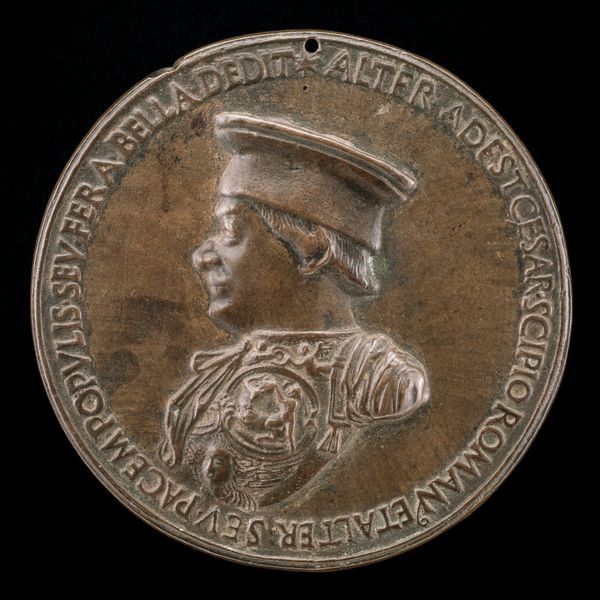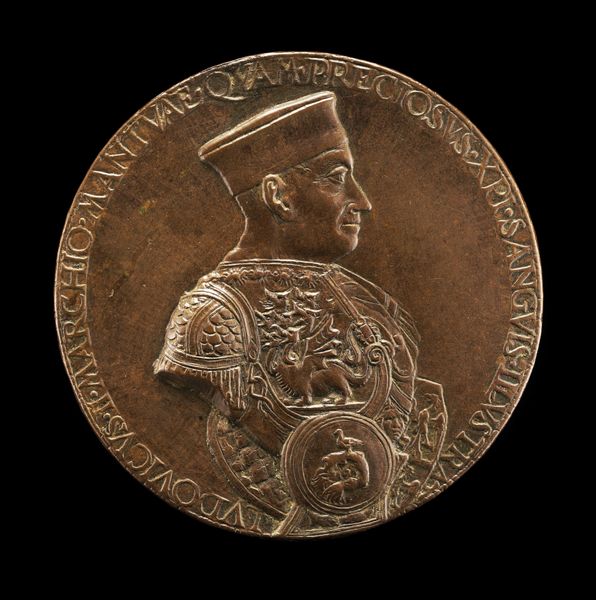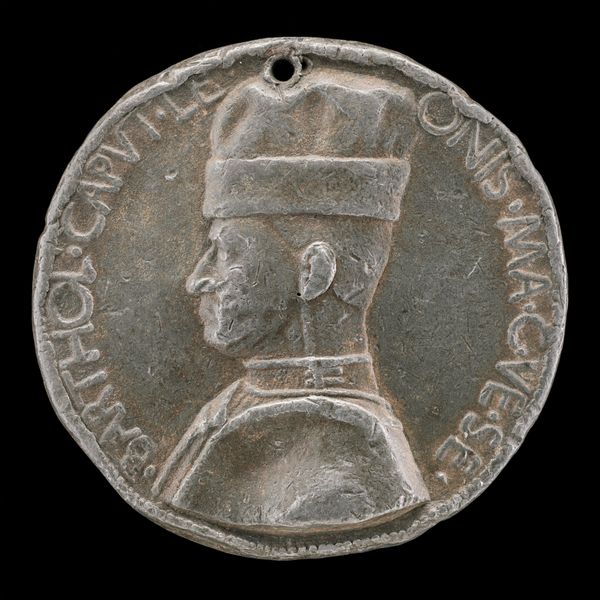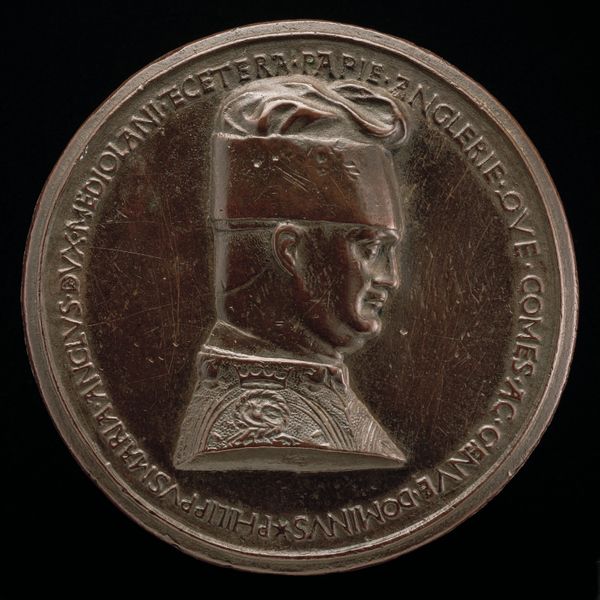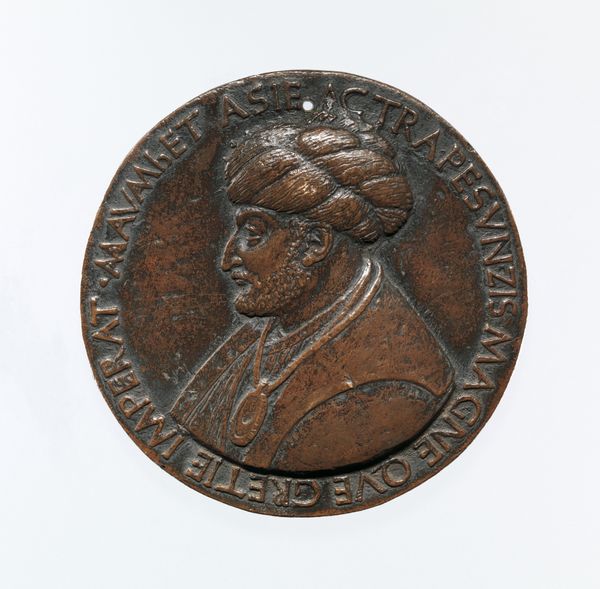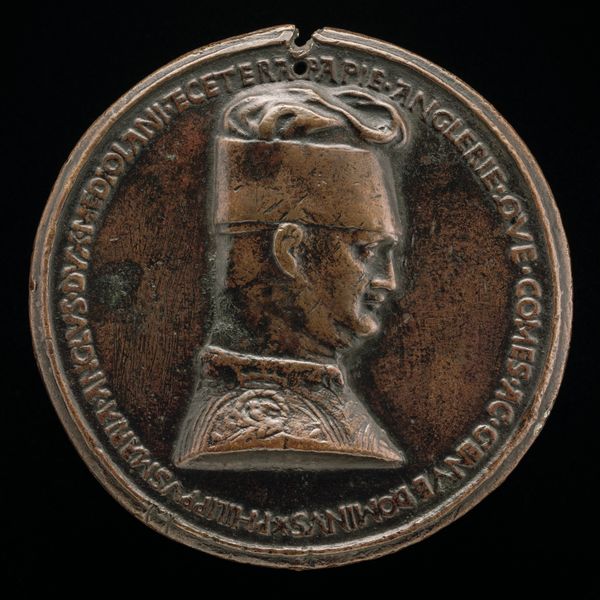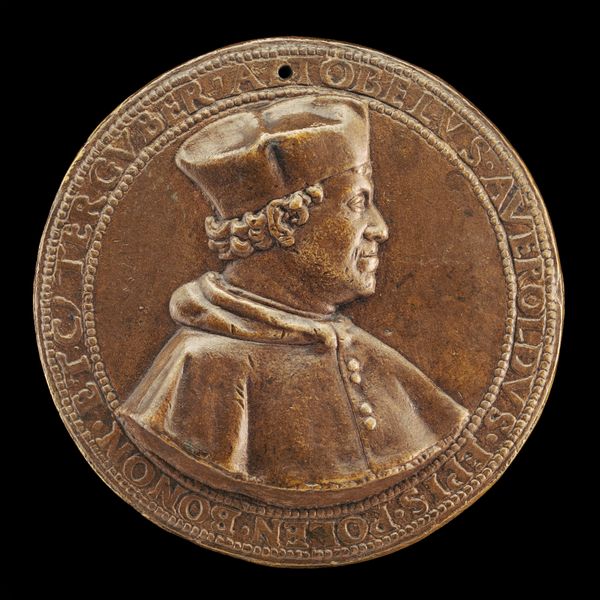![Niccolò Piccinino, 1386-1444, Condottiere [obverse] by Pisanello](/_next/image?url=https%3A%2F%2Fd2w8kbdekdi1gv.cloudfront.net%2FeyJidWNrZXQiOiAiYXJ0ZXJhLWltYWdlcy1idWNrZXQiLCAia2V5IjogImFydHdvcmtzLzBiYzFlYWI5LThkODgtNDcyMS05OGNmLTY2ZjZlNzFjZTIwNy8wYmMxZWFiOS04ZDg4LTQ3MjEtOThjZi02NmY2ZTcxY2UyMDdfZnVsbC5qcGciLCAiZWRpdHMiOiB7InJlc2l6ZSI6IHsid2lkdGgiOiAxOTIwLCAiaGVpZ2h0IjogMTkyMCwgImZpdCI6ICJpbnNpZGUifX19&w=3840&q=75)
bronze
#
portrait
#
medal
#
close up portrait
#
bronze
#
italian-renaissance
Dimensions: overall (diameter): 8.85 cm (3 1/2 in.) gross weight: 252.28 gr (0.556 lb.) axis: 12:00
Copyright: National Gallery of Art: CC0 1.0
Curator: This is a bronze portrait medal of Niccolò Piccinino, a 15th-century condottiere, or military leader, made by Pisanello around 1441. It showcases a profile of Piccinino, his name inscribed around the image, demonstrating Renaissance portraiture. Editor: Oh, the man has gravitas, hasn't he? A little severe perhaps, even arrogant, if you consider the hat. Though it looks almost toylike with that perfectly round profile against a stark flat bronze. What a weight the materials carry here... It really centers that stern gaze. Curator: Bronze was a deliberately chosen medium, evoking classical precedents while signifying permanence and power. These medals served as portable symbols of status, commissioned by rulers and important figures like Piccinino, and then circulated as diplomatic gifts. The act of commissioning, producing and disseminating these objects speak to power and control. Editor: I can imagine holding it, the coolness of the metal against my skin. Almost like holding history itself, that face frozen in bronze. He might've felt a certain immortality knowing his face could circulate, wouldn't you think? How strange for an artist, though, to realize you’re also part of the machine in all of that circulation. Curator: Precisely. The medal is not just about individual genius, but about skilled labor. The crafting, the melting of the metal, the inscription—it speaks volumes about workshop practices, the organization of labor and a developing sense of artistic enterprise during the Renaissance. The design would first need to be meticulously inscribed to act as a matrix to cast subsequent medals. Editor: Fascinating, to think about those unseen hands contributing to this single striking image. Does thinking about labor remove some of the perceived glory of it? Like does all the hard work undermine his personal success or something? Curator: On the contrary, understanding the broader context enriches it. The artist would gain greater fame as they were the head of an organization, essentially. The medal is a tangible embodiment of not just one person, but many—the complex economic, social and creative forces. It’s through these objects and their labor processes, too, that we come to a deeper, more layered understanding of art history itself. Editor: Indeed, I felt that coolness; you've really helped me touch its social reality! What a powerful reminder to consider beyond what the eye sees. Thanks for enlightening me on the importance of Piccinino's portrayal by looking at who it really involves! Curator: Likewise. Bringing together the physical object with these unseen hands certainly adds to its narrative and depth of historical study!
Comments
No comments
Be the first to comment and join the conversation on the ultimate creative platform.

